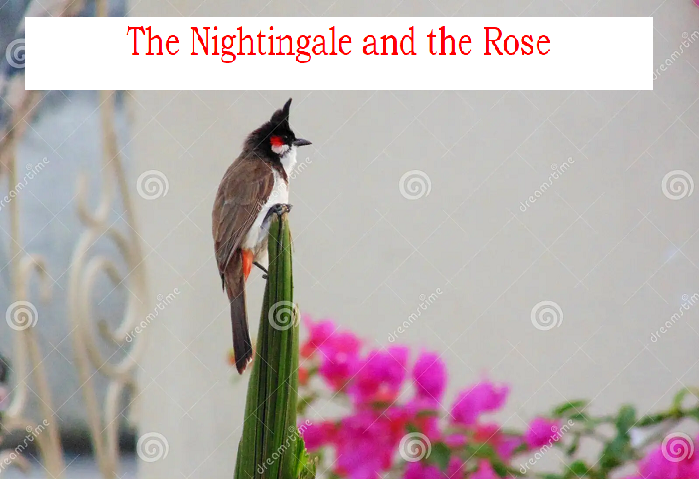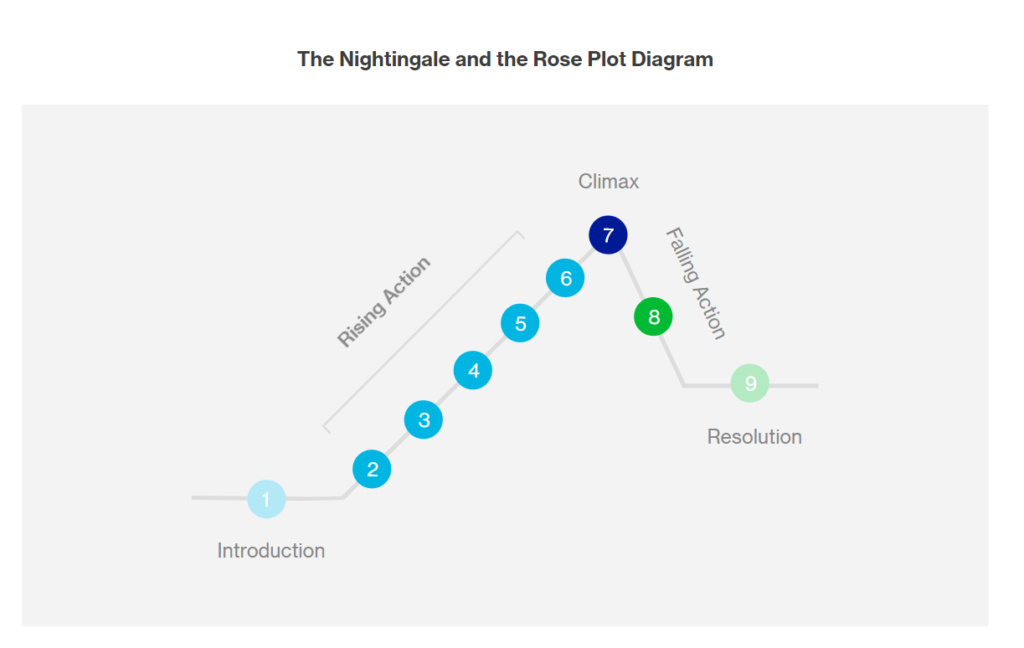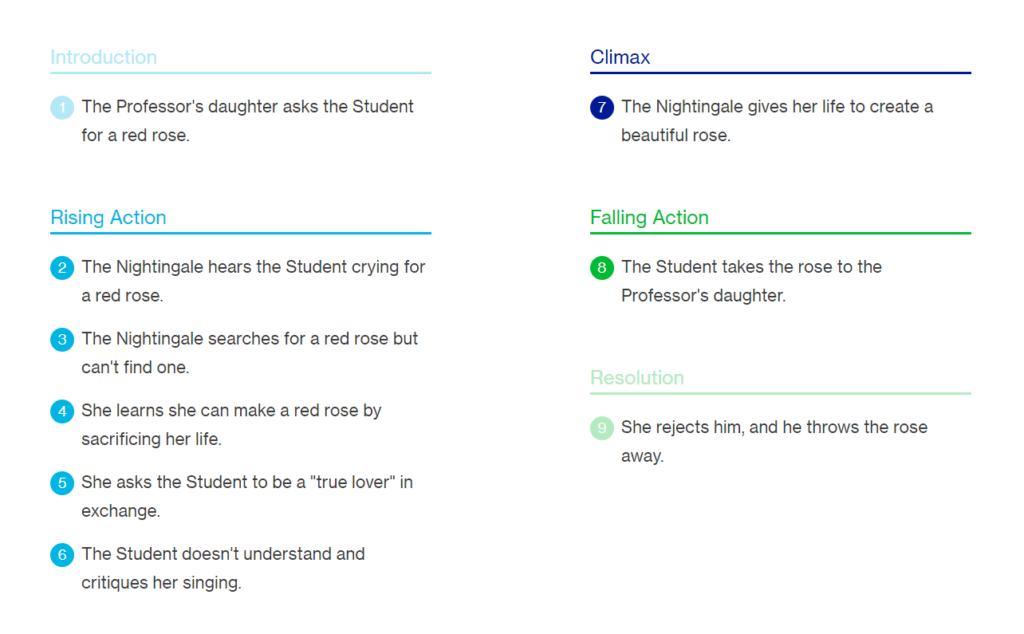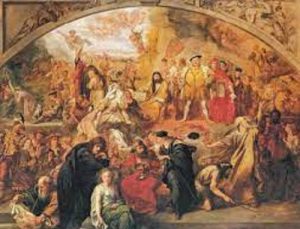Analysis of The Nightingale and The Rose
A comprehensive and critical analysis of The Nightingale and the Rose and by Oscar Wilde is as follows:
Form and Structure
This short story The Nightingale and the Rose gets its inspiration from fairy tales—those classic stories with magical elements. One thing to notice is that it’s quite short, just like many fairy tales. The characters in the story do not have regular names; they are either animals, plants, or named after jobs or relationships. The story carries a moral lesson, specifically arguing for art’s sake. Also, like traditional fairy tales, it uses repetition, where the Nightingale searches for a special rose, representing true art or love, and goes through similar situations until finding the right one. What sets it apart is its modern setting.

A Parody of The Nightingale
Oscar Wilde (1854–1900), a famous writer in the Victorian era, created a parody of a tale by the Danish Auther Hans Christian Andersen, another well-known author. Andersen wrote fairy tales like The Little Mermaid, Thumbelina and The Ugly Duckling, which are still loved today. Wilde’s story, The Nightingale and the Rose, was a direct response to Andersen’s The Nightingale. Both stories share a nightingale as the hero, but with a big difference. In Andersen’s tale, the bird saves the emperor’s court in China and becomes a valuable advisor. In Wilde’s version, the Nightingale’s sacrifice goes unnoticed and unrewarded. The key contrast lies in the authors’ attitudes—Andersen is sentimental, while Wilde is more of a cynic.
Andersen’s story is set in China, where a singing bird—the nightingale—is highly praised in the imperial court. But things change when a mechanical substitute appears, and the real nightingale is cast aside. Eventually, the mechanical bird fails, and the real nightingale returns, saving the emperor. In Wilde’s story, the Nightingale’s sacrifice is neither acknowledged nor rewarded. The main difference lies in how the two authors view the value of art and sacrifice.
Dramatic and Situational Irony
Now, let’s talk about irony which a big theme in The Nightingale and the Rose. Irony is when things happen differently than you expect. There are two types of irony in this story—dramatic and situational. Dramatic irony is when the audience knows something the characters don’t. For example, the audience knows the Nightingale’s plans to sacrifice herself, but the Student has no clue. Situational irony is when something happens that is opposite to what you would expect.
In the story, the Student criticizes the Nightingale for being shallow, not knowing she’s about to make a huge sacrifice for him. This is dramatic irony because we know the Nightingale’s plan, but the Student doesn’t. The Student claims to only care about practical things, yet he can only cry about his problems, showing his impractical side—this is situational irony. Another twist is when the Professor’s daughter rejects the Student after promising to dance with him. The Student calls her “ungrateful” and throws away the rose which the Nightingale died to create, showing dramatic irony because he doesn’t realize he is wasting a precious sacrifice.
Shallowness and Naivety
There are three characters in the story—the Nightingale, the Student, and the Professor’s daughter. They all have flaws. The Nightingale is not shallow but is quite naïve. She believes everyone values love as much as she does. She mistakes the Student’s immaturity for true love, sacrificing her life without realizing his unworthiness.
The Student thinks a red rose will solve all his problems and win the Professor’s daughter’s heart. He is naive to believe a romantic gesture will make up for his poverty. He’s also shallow because he is too focused on his own issues to notice the Nightingale’s help.
The Professor’s daughter is the most materialistic and shallow. She easily promises to dance with the Student for a red rose but changes her mind when offered jewels by the Chamberlain’s nephew.
Allegory
Lastly, The Nightingale and the Rose serves as an allegory for Wilde’s idea of aestheticism—the belief that art should exist for its own sake. The Nightingale represents the ideal aesthete, willing to sacrifice everything for art without expecting anything in return. On the other hand, the Student embodies mainstream Victorian society, thinking art should have a practical benefit. Because art and love are impractical, the Student contrasts them negatively to logic.
Despite the Student’s aversion to love and art, the Nightingale remains oblivious to this, focusing solely on what aligns with her own desires driven by passion and aesthetic instincts. She views him as a genuine lover and a kindred soul. She compares his lips to a rose, and his brow to a hyacinth. Ultimately, she makes the selfless sacrifice of her life for the Student, without expecting or receiving any reciprocation. The story explores the clash between Wilde’s artistic ideals and what society expects from art.


#analysis of The Nightingale and the Rose #analysis of The Nightingale and the Rose #analysis of The Nightingale and the Rose #analysis of The Nightingale and the Rose #analysis of The Nightingale and the Rose #analysis of The Nightingale and the Rose #analysis of The Nightingale and the Rose #analysis of The Nightingale and the Rose #analysis of The Nightingale and the Rose
Read More
Wordsworth and His Love for Nature
Introduction to Fiction and Non Fiction
Of Death — Francis Bacon (Text)
Of Truth Critical Analysis by Sir Francis Bacon
Of Truth by Francis Bacon Summary
Visit Us on our Facebook Page:




